Author: Marshall Schott
Developed by the USDA hop breeding program and released to the public in 1985, Chinook was one of the original “C-hops” that helped define the classic American Pale Ale and IPA character. In addition to being a solid bittering hop with its high alpha acid content, Chinook is known to impart a blend of pine, spice, and grapefruit characteristics to beer, making it an ideal dual purpose variety.
Alpha: 12 – 14%
Beta: 3 – 4%
Cohumulone: 29 – 34%
Total Oil: 1.5 – 2.7 mL/100g
Myrcene: 35 – 40%
Humulene: 18 – 25%
Caryophyllene: 9 – 11%
Farnesene: 0 – 1%
Linalool: 0.2 – 0.4%
Geraniol: 0.7 – 1.0%
ß-Pinene: 0.3 – 0.5%
Parentage: cross between Petham Golding and USDA 63102M
While Chinook continues to account for a good portion of the American hop acreage, nearly all are grown in the Pacific Northwest, namely the hop mecca of Washington’s Yakima Valley. 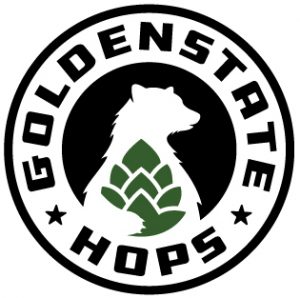 I was recently introduced to prominent Fresno farmer, Grant Parnagian, who began growing hops experimentally in 2017 under the name Golden State Hops, one variety of which is Chinook. After getting the opportunity to rub some cones during a visit to his quaint hop yard, I couldn’t wait to put them to use and to see what blind tasters would think!
I was recently introduced to prominent Fresno farmer, Grant Parnagian, who began growing hops experimentally in 2017 under the name Golden State Hops, one variety of which is Chinook. After getting the opportunity to rub some cones during a visit to his quaint hop yard, I couldn’t wait to put them to use and to see what blind tasters would think!
| MAKING THE BEER |
To make sure the hop character took center stage, I brewed a very simple Pale Ale fermented with a notably clean yeast.
California Chinook Pale Ale
Recipe Details
| Batch Size | Boil Time | IBU | SRM | Est. OG | Est. FG | ABV |
|---|---|---|---|---|---|---|
| 5.5 gal | 60 min | 35.0 IBUs | 5.4 SRM | 1.053 | 1.013 | 5.3 % |
| Actuals | 1.053 | 1.011 | 5.5 % | |||
Fermentables
| Name | Amount | % |
|---|---|---|
| Lamonta American-style Pale Malt (Mecca Grade) | 10 lbs | 88.89 |
| Vanora Vienna-style Malt (Mecca Grade) | 1.25 lbs | 11.11 |
Hops
| Name | Amount | Time | Use | Form | Alpha % |
|---|---|---|---|---|---|
| Cali Chinook | 10 g | 60 min | Boil | Pellet | 12 |
| Cali Chinook | 26 g | 10 min | Boil | Pellet | 12 |
| Cali Chinook | 60 g | 2 min | Boil | Pellet | 12 |
| Cali Chinook | 60 g | 7 days | Dry Hop | Pellet | 12 |
Yeast
| Name | Lab | Attenuation | Temperature |
|---|---|---|---|
| Dieter (G03) | Imperial Yeast | 75% | 60°F - 69°F |
Notes
| Water Profile: Ca 140 | Mg 1 | Na 10 | SO4 254 | Cl 159 |
Download
| Download this recipe's BeerXML file |
I made a starter of Imperial Yeast G03 Dieter a couple days ahead of time.
The night before brewing, I weighed out and milled the simple grainbill.
Once the grain was crushed, I collected the brewing liquor, adjusted it to my desired profile, then dropped my heat stick in and set a timer to turn on a few hours before I planned to brew the next day.
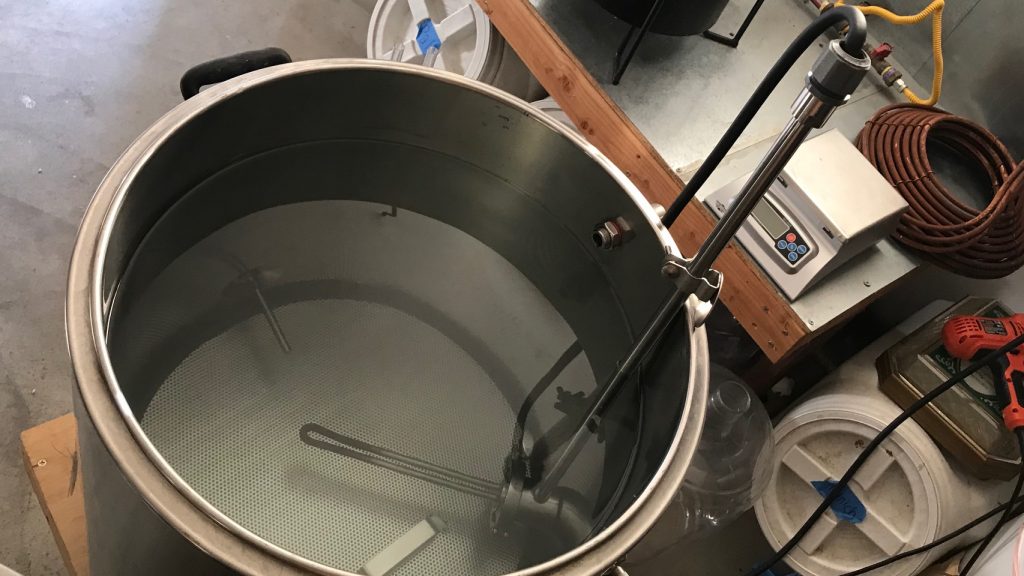
I woke up to hot strike water and mashed in.
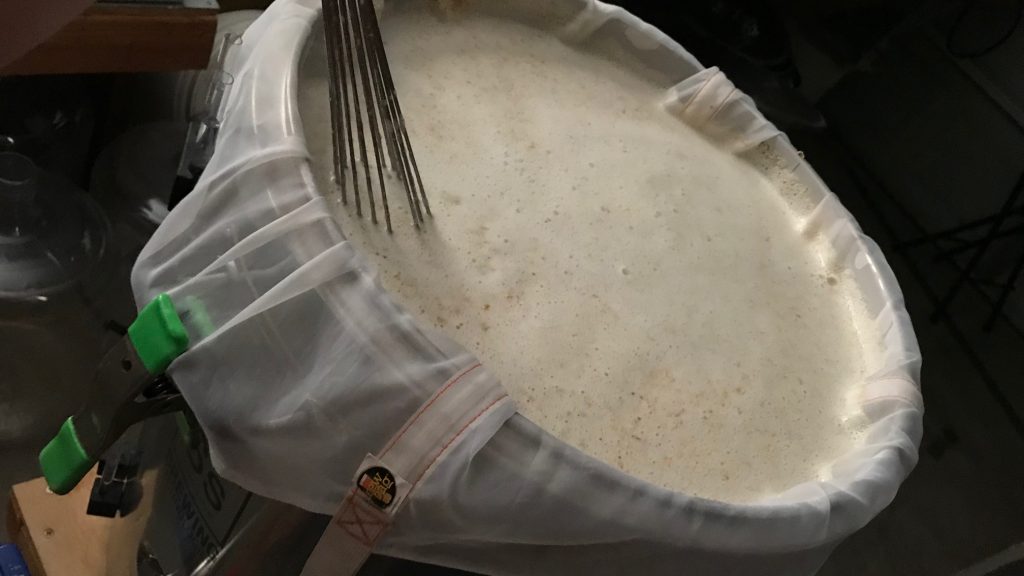
When the grist was fully incorporated into the full volume of water, I checked to make sure I hit my target mash temperature.
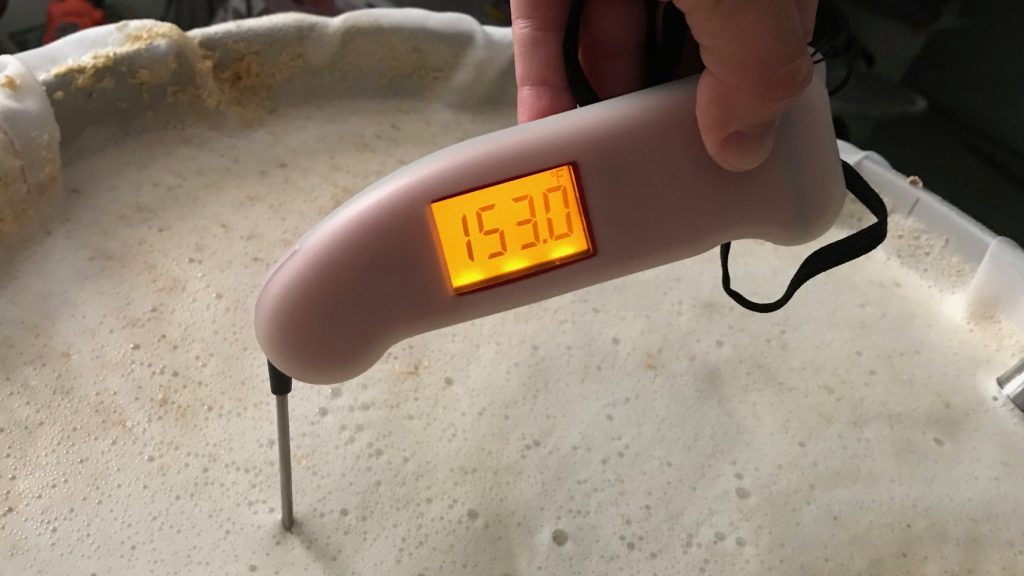
Following a 60 minute mash rest, I collected the sweet wort.
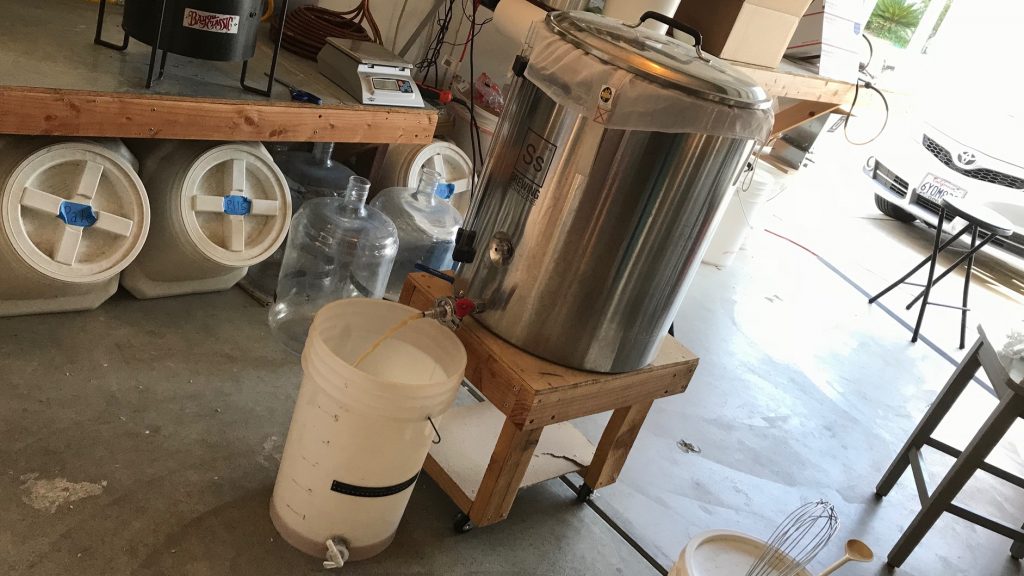
After transferring the wort to a kettle and hitting the flame, I weighed out all of the hop additions.
The wort was boiled for 60 minutes with hops added at the times stated in the recipe.
When the boil was finished, I quickly chilled the wort to 74°F/23°C, which was slightly warmer than my groundwater temperature at the time.
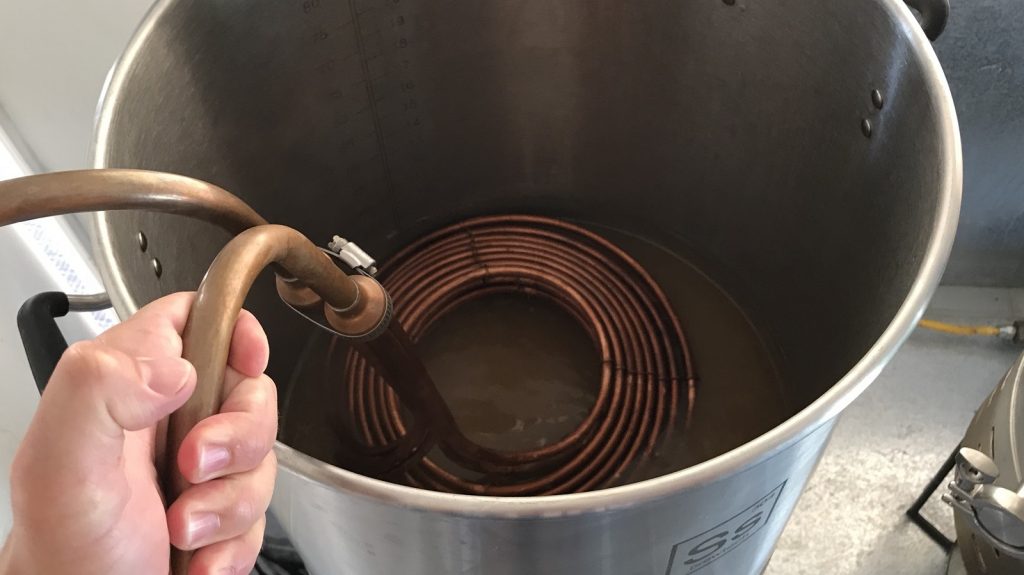
I took a refractometer measurment that confirmed the wort was at my target 1.053 OG.
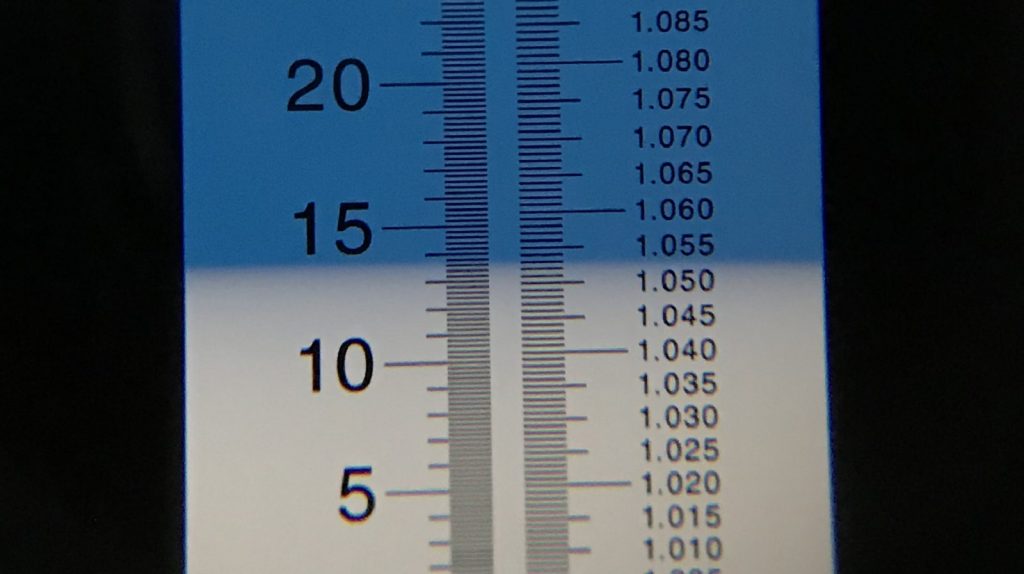
I then transferred 5.5 gallons/21 liters of wort to a Brew Bucket, which had a stainless mesh hopper with the dry hop addition sitting in it.
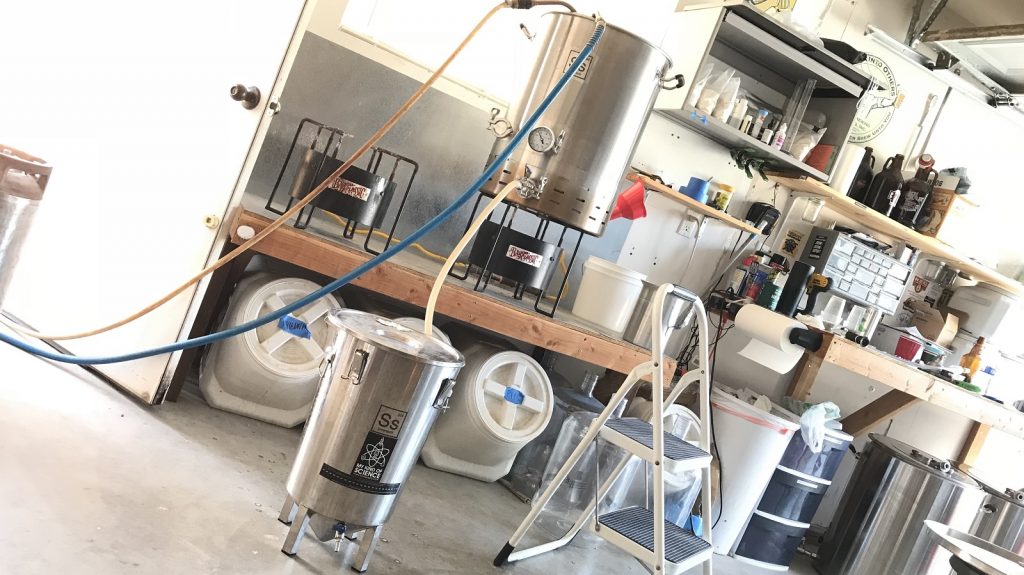
I placed the filled fermentor in my fermentation chamber to finish chilling to my desired fermentation temperature of 66°F/19°C, at which point I pitched the yeast. With fermentation activity appearing absent 6 days later, I took a hydrometer measurement confirming FG had been reached.
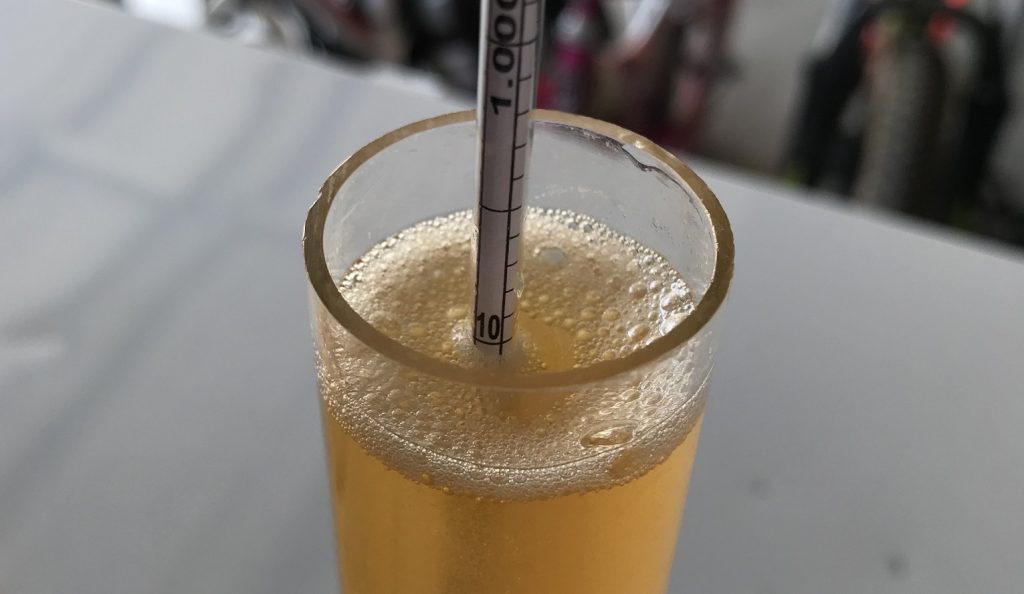
After swapping out the airlock for a CO2 filled BrüLoonLock, I reduced the temperature to 32°F/0°C for a 4 day cold crash, opting to skip my typical gelatin fining process.
Packaging the beer began by purging a keg with CO2.
With the help of my cute assistant, the keg was filled with beer.
The filled keg was placed in my cool keezer on gas for a period of burst carbonation before I reduced the CO2 to serving pressure. After a few days of cold conditioning, the beer was carbonated and ready to serve.
| METHOD |
Participants were instructed to focus only on the aromatic qualities of the beer before evaluating the flavor. For each aroma and flavor descriptor, tasters were asked to rate the perceived strength of that particular characteristic on a 0-9 scale where a rating of 0 meant they did not perceive the character at all and a rating of 9 meant the character was extremely strong. Once the data was collected, the average rating of each aroma and flavor descriptor was compiled and analyzed.
| RESULTS |
A total of 16 people participated in the evaluation of this beer, all blind to the hop variety used until after they completed the survey. The average aroma and flavor ratings for each descriptor were plotted on a radar graph.
Average Ratings of Aroma and Flavor Perceptions
The 3 characteristics endorsed as being most prominent by participants:
| Aroma | Flavor |
| Tropical Fruit | Apple/Pear |
| Apple/Pear | Tropical Fruit |
| Stone Fruit | Stone Fruit |
The 3 characteristics endorsed as being least prominent by participants:
| Aroma | Flavor |
| Pine | Spicy/Herbal |
| Spicy/Herbal | Pine |
| Resinous | Onion/Garlic |
Participants were then asked to rate the pungency of the overall hop character.
Next, they were instructed to identify beer styles they thought the hop would work well in.
Finally, tasters were asked to rate how much they enjoyed the hop character on a 1 to 10 scale.
My Impressions: Perhaps the best single word to describe my experience with this beer is “unexpected.” I’ve used Chinook hops grown in the Pacific Northwest umpteen times in my brewing, I feel like I know it well, and this beer didn’t taste much like the sharp pine and grapefruit rind I’ve come to expect from this variety. Rather, I perceived the beer as having a moderately pungent fruit basket aroma with the most prominent flavors being ripe peach and fresh cut honeydew melon. Incredibly pleasant!
| CONCLUSION |
Fresno is to agricultural in California as Yakima is to agriculture in Washington state. However, whereas Fresno produces a good chunk of the world’s citrus and nuts, hops are a major cash crop in Yakima, with some estimates stating nearly 75% of the nation’s hops are grown in this region. Ask any Yakima hop farmer why this is and responses are likely to include terroir and, more importantly, the fact of its location on the 46th parallel, which provides an ideal climate for growing hops. In fact, many popular German hop farms lie near the same parallel.
In addition to lying quite a bit further south on the 36th parallel, which means less sunlight during hop growing season, Fresno’s climate is dry and very hot, regularly reaching temperatures above 100°F/38°C. Indeed, such conditions are viewed by many as less than ideal, but that’s not the case for Grant Parnagian of Golden State Hops who hopes to provide brewers in California’s Central Valley with a local option for hops.
Based on the blind evaluation from participants, the all California Chinook hopped Pale Ale presented with moderate levels of tropical fruit and stone fruit characteristics, which on its own is goes against common descriptors of pine and citrus for Chinook grown in the Northwest. More surprising was the number of tasters who detected notes of apple/pear in the beer, a characteristic that has thus far received very low ratings in other editions of The Hop Chronicles. Did the region in which these Chinook hops were grown really have that big of an impact?
Regardless, the preference ratings speak for themselves, people really did seem to enjoy this California Chinook Pale Ale. In conversations I had with participants following completion of the survey, I heard terms like “smooth fruit flavor” and “not too sharp,” with one particularly experienced craft beer drinker saying, “This needs to be used in a New England IPA!”
Unexpected, indeed, but also pleasantly surprised. I really enjoyed the character these California Chinook hops imparted to my simple Pale Ale and look forward to using them in conjunction with other varieties, as well as trying out more of what Golden State Hops has to offer.
California-grown Chinook is available now at Golden State Hops, get them while you can! If you have any thoughts on this variety, please feel free to share them in the comments section below.
Support Brülosophy In Style!
All designs are available in various colors and sizes on Amazon!
Follow Brülosophy on:
FACEBOOK | TWITTER | INSTAGRAM
If you enjoy this stuff and feel compelled to support Brulosophy.com, please check out the Support page for details on how you can very easily do so. Thanks!



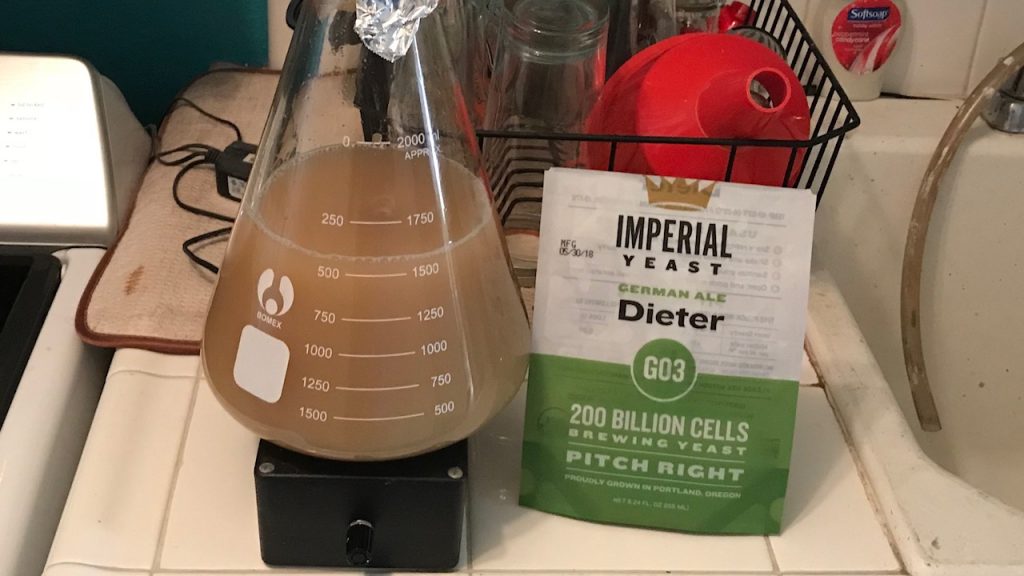

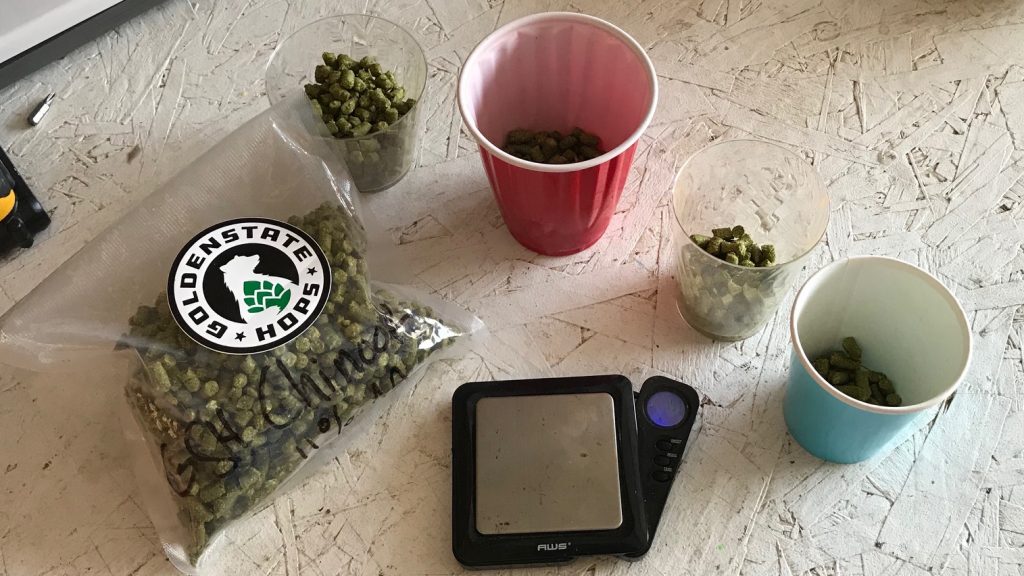
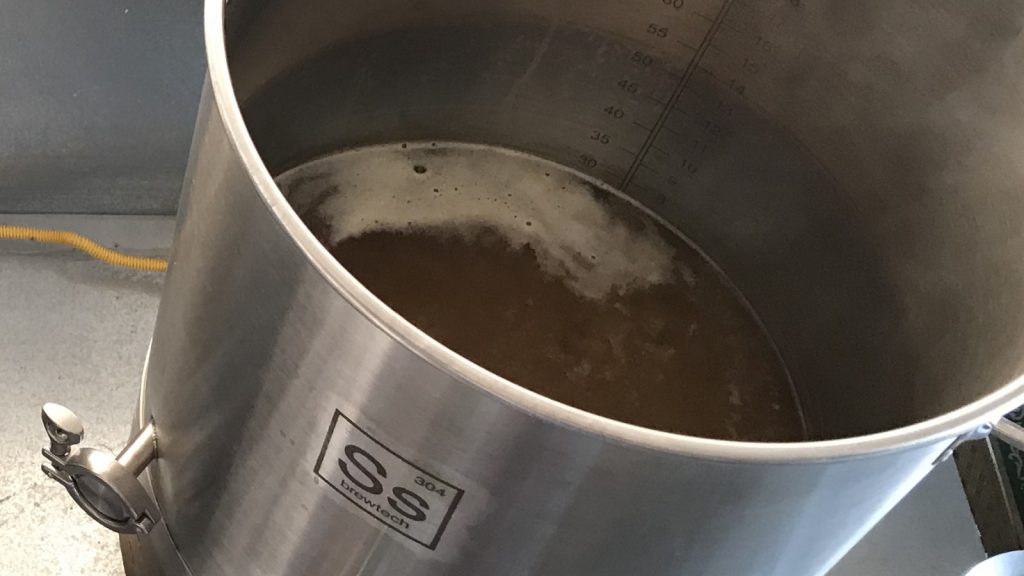
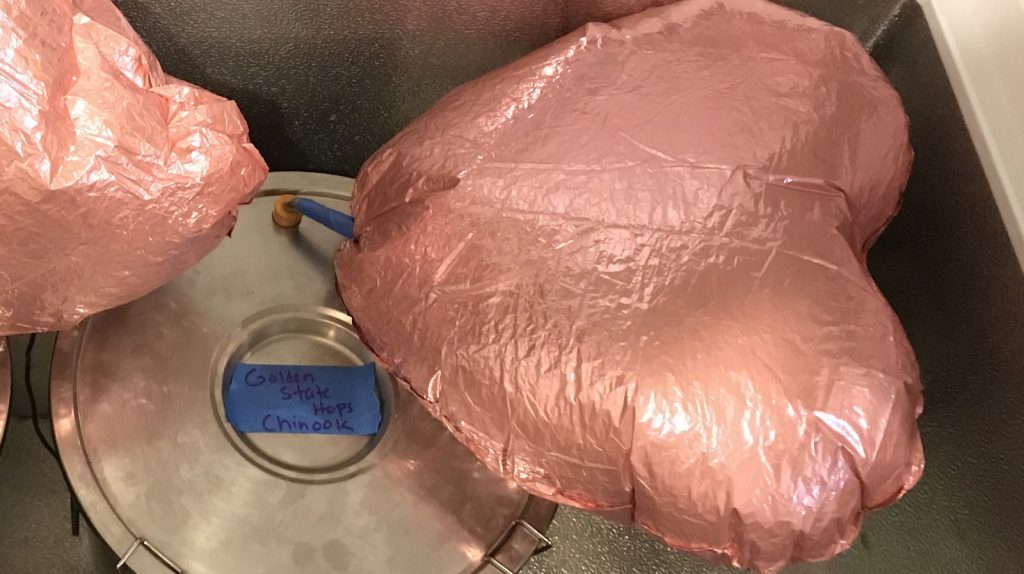
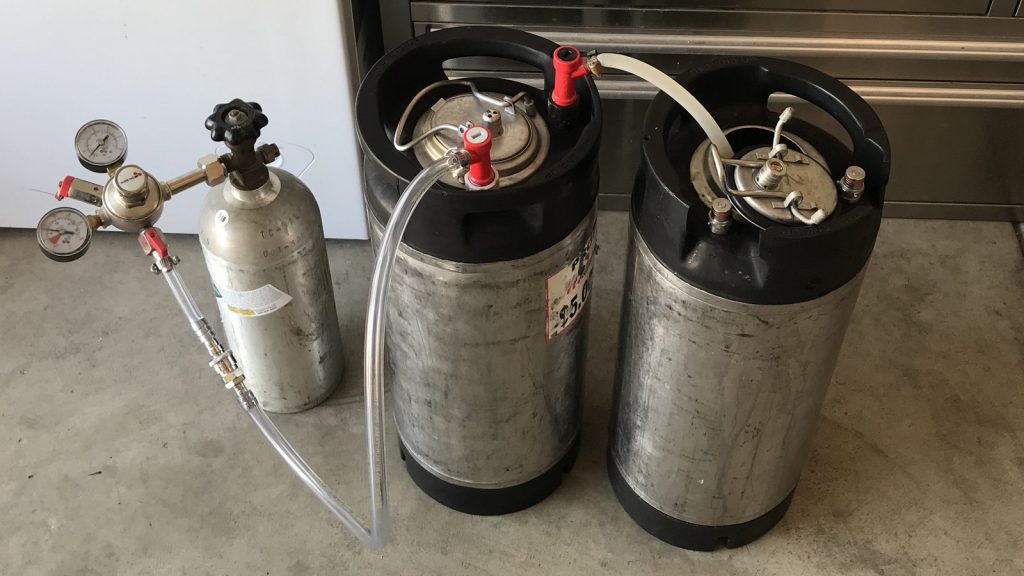
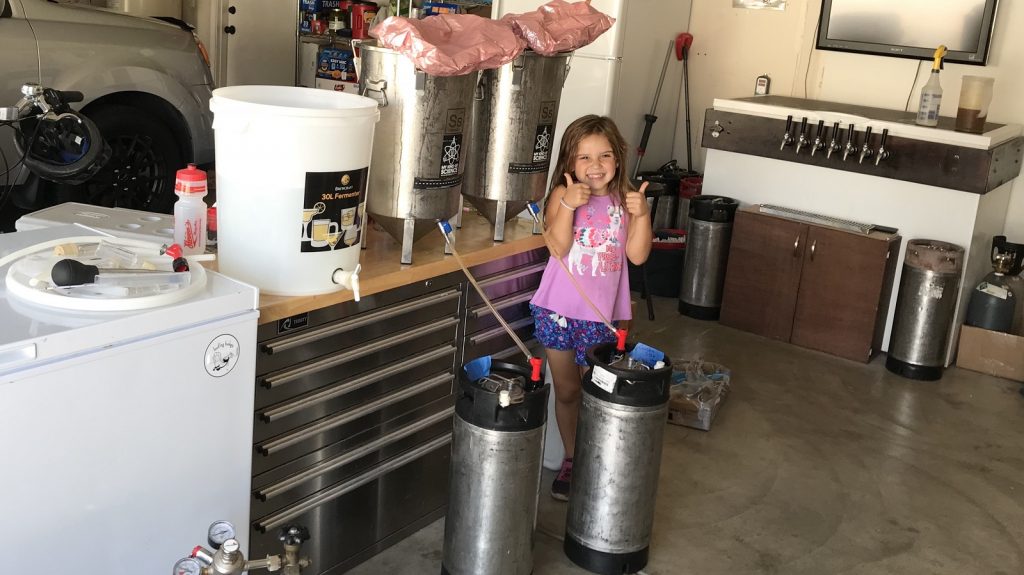
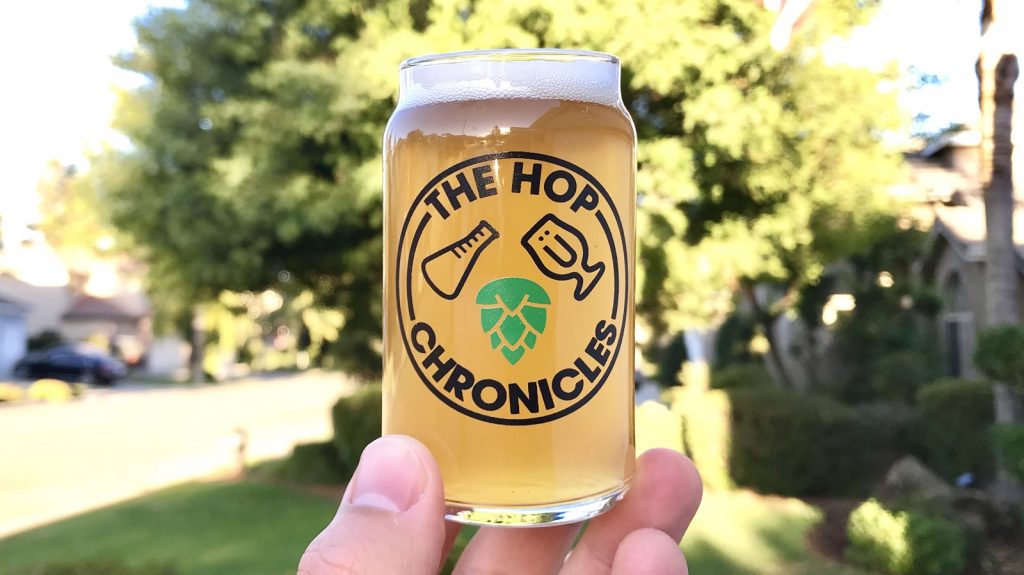
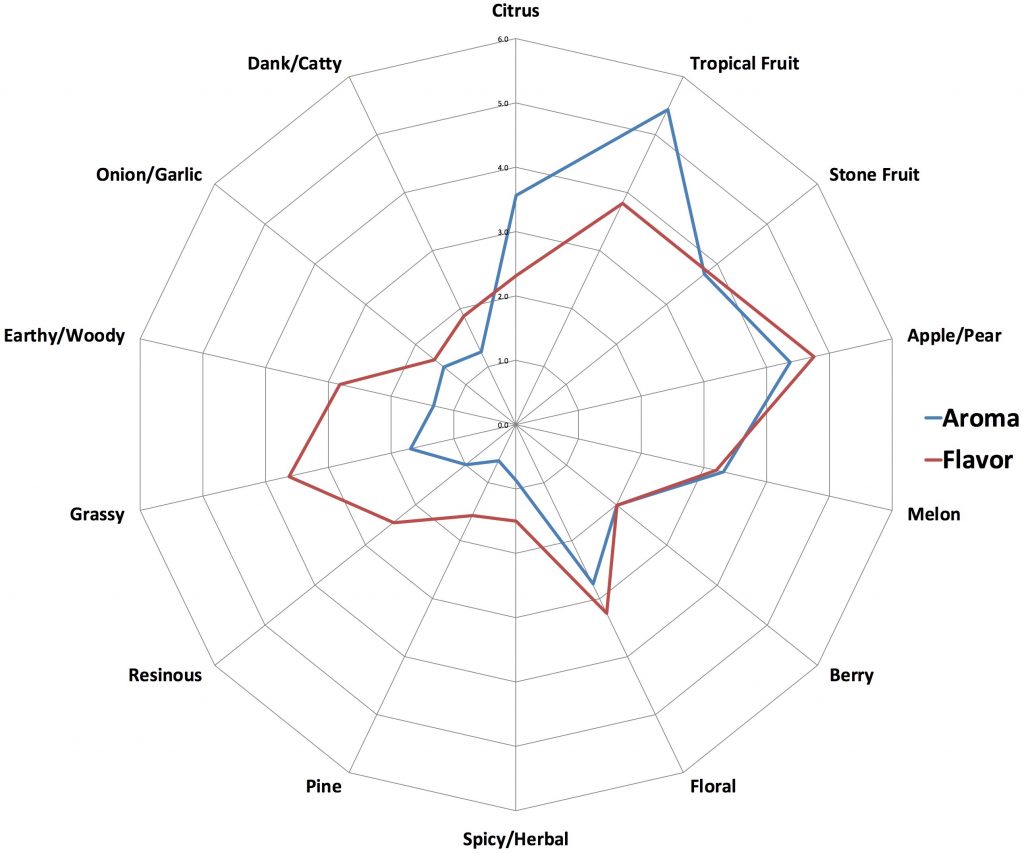
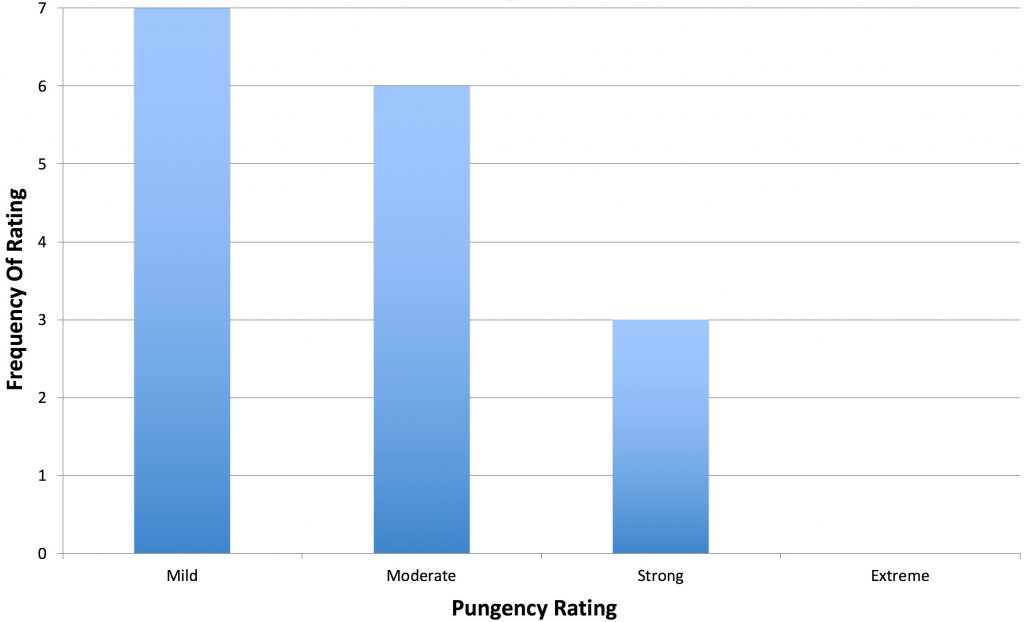
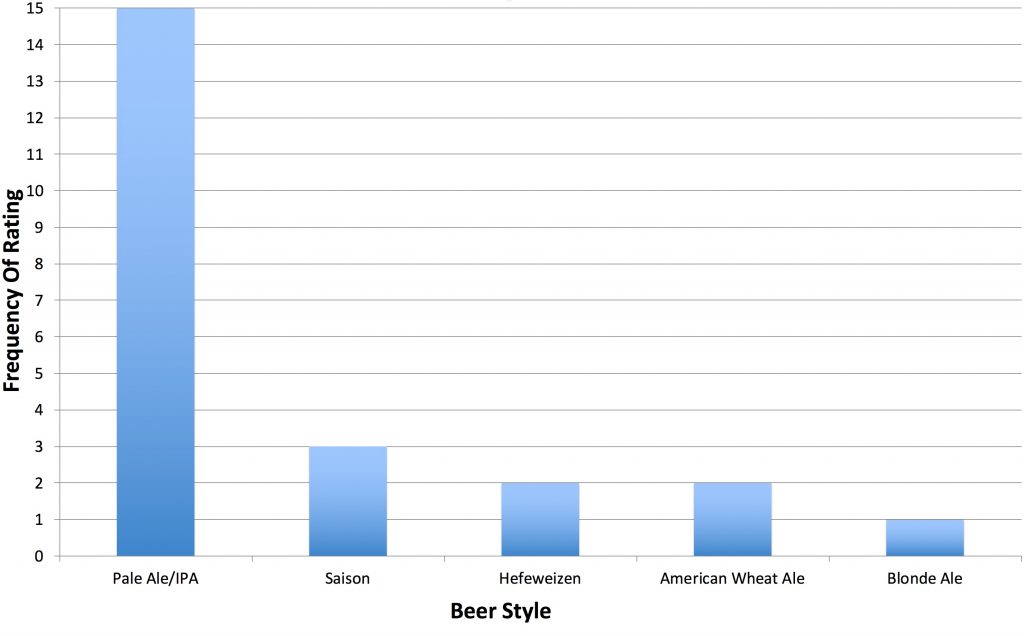
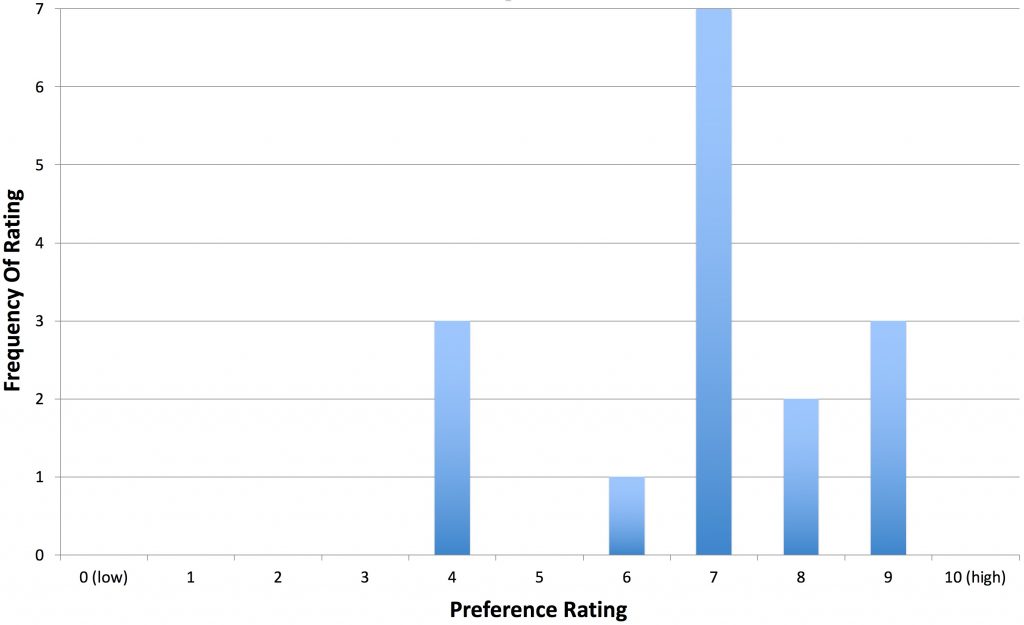










11 thoughts on “The Hop Chronicles | California Chinook (2018) Pale Ale”
Great report. However, one point that gets me a lot these days…..surely, once you add dry hops to a pale ale it becomes an Indian Pale Ale?
I don’t think so, but honestly, what’s in a name? Call it what you want!
I thought it became an ipa when you added Indians?
Confirms my thought thatl American hops are moving towards more tropical/fruit flavors whether intentionally or not. Sad really since there are plenty of these varieties available already. I enjoy brewing with a wide variety of flavors and am afraid this soon might not be the case.
From the pic, it appears you used a bucket to transfer the mashed wort to the boil pot. Any concern for oxidation when pouring the warm wort from the transfer bucket into the boil pot ? Perhaps you did not pour it in, but rather hooked up a hose to the bucket valve and gravity-drained it into the boil pot.
Nope!
https://brulosophy.com/2014/11/18/is-hot-side-aeration-fact-or-fiction-exbeeriment-results/
https://brulosophy.com/2016/12/26/hot-side-aeration-pt-2-evaluating-the-impact-of-age-exbeeriment-results/
Wow. Love your exbeeriments. Thanks Marshall !!!
There was a batch of Chinook last summer that tasted like straight up lemon doughnuts. It was fantastic. I’m pretty sure that a lot of hop flavor descriptions are out of date, as they most likely came from recipes that included boil additions, lots of IBUs and light-but-late dry hopping
Yay for skipping gelatin! 😉
I find Chinook really fruity when added during ferm, wherever it is grown. Trapped thiols maybe??
Great write up as always. Thanks
Hey Marshall, cool write up. Can you tell me more about how you rigged the mesh Hopper for yory brew bucket? Attached to the pickup, or just hanging inside or?
No rigging, really. I just toss it in.